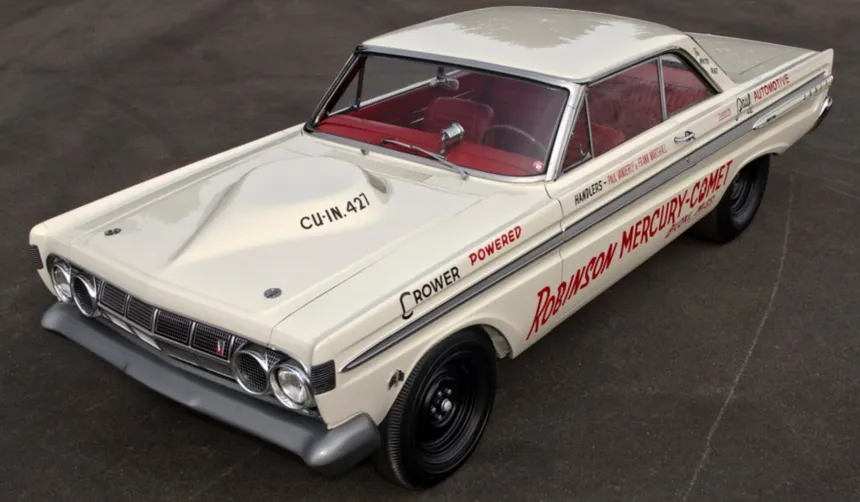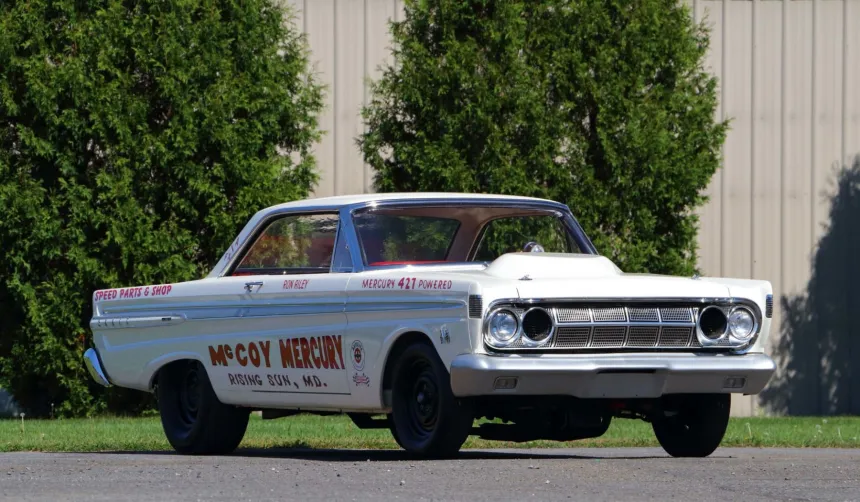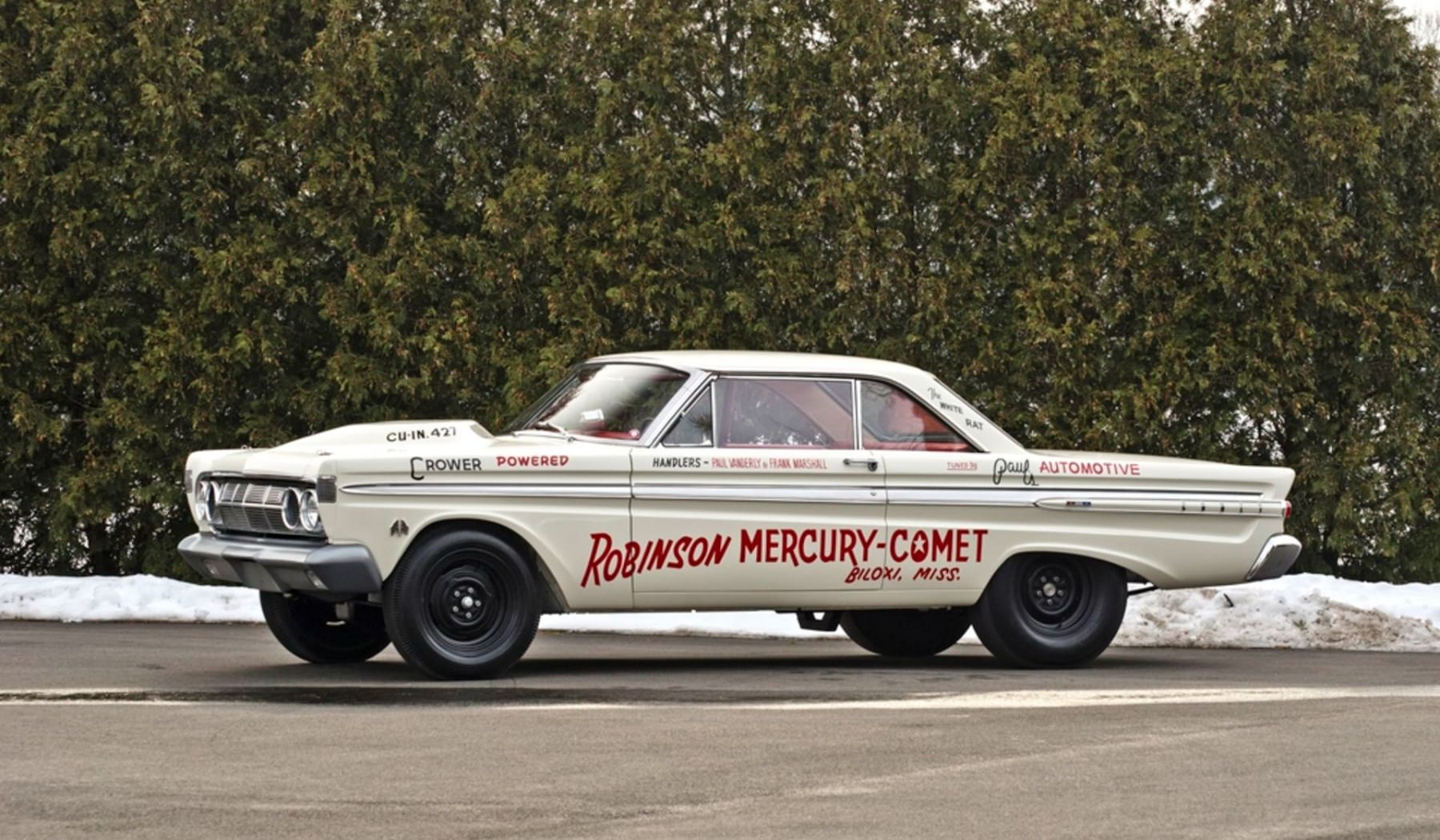Based on an upscale compact developed by a brand that didn’t prioritize performance, the lightweight, 427-powered A/FX became an instant drag racing legend.
During the early 1960s, it became clear that “Win on Sunday, Sell on Monday” wasn’t just a popular catchphrase among dealership owners but a full-blown marketing strategy that Detroit’s biggest brands had to implement in order to remain relevant.
Ford was the most aggressive carmaker to pursue this new, unwritten rule by launching the “Total Performance” campaign.
The company got involved in nearly all conceivable motorsport competitions, racking up an impressive record of triumphs.
By the end of the decade, Ford had dominated NASCAR, earned two Constructors’ Championships in Formula 1, and won Le Mans – the world’s most famous endurance race – four times in a row.
It goes without saying that the “Total Performance” strategy trickled down to mass-produced road cars, making Ford one of the most influential brands of the original muscle car era.
However, while the Ford branch of the huge corporation already focused a considerable part of its resources on motorsports and street performance in the early part of the decade, the Lincoln-Mercury division initially didn’t adhere to the new strategy with the same aggressiveness.

That was understandable since the Lincoln and Mercury vehicles catered to those looking for upscale and luxury cars.
Nevertheless, with dealers demanding more factory-built performance, FoMoCo pushed Mercury to increase its involvement in the American racing scene for the 1964 season.
The brand had been competing in NASCAR, where it played second fiddle to Ford, but since drag racing had become the country’s second most popular motorsport, the division eyed to replicate Ford’s Fairlane-based Thunderbolt project and develop a contender for the NHRA (National Hot Rod Association) series.
After convincing several of the sport’s most promising drivers, like “Dyno” Don Nicholson, to join its ranks, Mercury chose the new, second-generation Comet as the base for the project.
Initially, the new Merc drag-racing weapon was set to compete in NHRA’s Super Stock class. However, that meant going head-to-head with Ford’s Thunderbolt.

Therefore, the project pivoted to the A/FX (Factory Experimental) class, which allowed more intricate modifications and a smaller production run.
In the early stages of development, “Dyno” Don was asked to choose between a two-door hardtop Comet and a wagon (aka Villager).
He chose the latter, as its heavier rear end meant more traction for the rear wheels, but the production version was eventually based on the two-door hardtop Caliente trim.
Like the Thunderbolt, the stock Comet was transformed into a drag strip warrior by the concept car experts at Dearborn Steel Tubing (DST).
The prototype wagon and the production hardtops were extensively modified for racing duties.
The first order of business was to shed as much weight as possible. This was done by fabricating the fenders, bulging teardrop hood, doors, and even the front bumper from fiberglass.
Then, anything deemed unnecessary, like sound insulation, seam sealing, air conditioning, heater, or radio, was omitted. Furthermore, the stock carpeting was replaced with thinner material, the side windows were made of plexiglass, and the factory seats were swapped for lighter ones borrowed from a Ford van.

The second important task on DSR’s checklist was making the compact Comet’s engine bay cozy enough for the gargantuan 427-ci (7.0-liter) V8 chosen for the project.
In 1964, the stock Comet’s largest, most powerful engine was the 289-ci (4.7-liter) small-block Cyclone V8. Although the model had just been redesigned, the compact’s engine bay was not conceived for a big block, so the 427 simply didn’t fit.
To solve the issue, the DSR crew modified the shock towers and firewall. Legend has it that the latter was hand-formed but not in the coachbuilding manner you would think.
Since they only had to make the engine bay bigger and not prettier, the workers allegedly pushed the firewall back using a good old sledgehammer.
The modifications proved effective, and the AF/X Comet received its gargantuan 427.
The version used in this epic race car was the fire-spitting high-riser. Initially developed for NASCAR, the engine featured domed pistons that upped the compression to 14:1, race-bred heads with larger ports, tube steel headers, and an aluminum manifold with two Holley four-barrel carburetors that received cold air through a pair of ducts that exited through the headlight openings.

Though it was officially rated at 425 hp, the highly-modded V8 was capable of delivering over 500 horses. All that power was sent to the rear wheels through an aluminum case four-speed manual, and a bombproof 9-inch rear.
Equipped with slicks and delivered with a Wimbledon white finish contrasted by a bright red interior, the Comet A/FX could achieve twelve-second quarter-mile runs straight off the dealership floor.
During the 1964 season, the likes of Don Nicholson, Ronnie Sox, or Buddy Martin pushed the high-powered Merc into mid-elevens, winning the vast majority of the races they participated in.
Mercury built only 21 examples in 1964. All of them were raced extensively and subsequently modified to become even faster.
It’s estimated that around 15 have survived, and a handful have been restored to their original specifications.
These restored survivors rarely pop up at auctions, but when one does end up under the hammer, it usually fetches over $200,000.
Six decades after it propelled Mercury to the top of the drag racing rankings, the Comet A/FX remains one of the cars ever conceived by the now-defunct brand and one of the most brutal muscle cars of the sixties.
